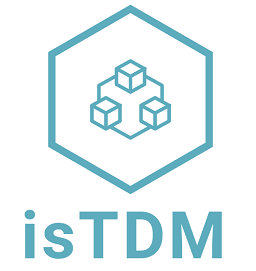The following are listed two main examples of envisioned scenarios for using the conceptual model of TD.
Scenario 1: Practitioners or Researchers to develop and/or tailor TDM technologies.
We suggest that researchers and practitioners use the conjectured conceptual model to structure future research on TDM and develop or tailor TDM technologies.
Description of Scenario 1. Consider researchers are investigating the management of TD types. Additionally, consider software practitioners developing or tailoring technologies to handle TD in their projects. For these cases, both researchers and practitioners may also use the model to identify and understand the concerns on TDM (i.e., the conceptual elements and their relationships). For instance, researchers and practitioners may identify that a TD item is associated with a TD type observed in a software artifact. In turn, each TD item can impact one or more attributes of internal quality. Also, the model shows that a TD item may require a management strategy to address it. The management strategy refers to a set of actions (TDM macro-activities and/or pragmatic actions) that must be structured and performed by specific stakeholders to deal with TD. Besides, specific support technologies may be investigated or adopted to perform the required actions. To describe a more pragmatic scenario considers the development of an inspection process (instance of Management Strategy) that should be used by the developers (instance of the Stakeholders) to assist them in identifying (instance of Actions/TDM Macro-activities) those debts (instance of TD items) that are not observable from the source code (instance of Software Artifacts). Then, the identified findings summarized about TDM in the conjectured conceptual model may also be used as an initial asset to guide the researchers and practitioners about the relevant information that needs to be considered when handling the management of TD. Also, we assume that the model can provide information that may be used to design artifacts to support the management of TD, such as documenting TD items (e.g., a TD items’ document specification). Some of the model elements can be mapped to the “designed documentation artifact” as useful information.
Scenario 2: Researchers in the TD (novice or experts) field seeking to understand and/or investigate specific topics regarding the understanding of TD and its management.
We believe that this conjectured conceptual model may support the structuring of future investigations on TD. Description of Scenario 1. Consider researchers are investigating TD types. For this case, the model may be used by the researchers to help in identifying and understanding the TD types that can occur in software development (i.e., their concepts). Besides, the researchers can use the knowledge summarized in the model to identify and understand the relationships among the concerns associated with TD types needing investigation (e.g., the relationship between TD types, TD items, and their causes). Then, the identified findings summarized about TD types, TD items, and their causes may be used as an initial asset to drive the researchers when investigating TD types.
